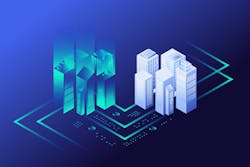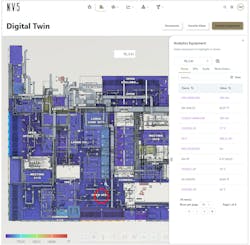Digital twins: Transforming operations for greater efficiency
Buildings consume a substantial 40% of global energy, and the Environmental Protection Agency reports that 30% of this energy is wasted due to inefficiencies. While efforts to improve building efficiency have been iterative, recent advancements have significantly enhanced the interaction between facility managers, building owners, and their facilities.
A leading innovation in this field is the use of digital twins, which facilitate a smooth handover from construction to operation and greatly enhance operational efficiency.
Evolution of Digital Building Systems
Over the past few decades, buildings have increasingly integrated digital systems. However, the integration of these systems into everyday operations has not kept pace with technological advancements.
Building owners and facility managers often invest millions in sophisticated control systems and energy-efficient mechanical, HVAC, electrical, and plumbing systems, expecting seamless functionality. Unfortunately, without proper oversight, these systems often fail to deliver the anticipated benefits, leading to increased energy costs and operational issues.
Embracing Monitoring-Based Commissioning
To combat these challenges, regular retro-commissioning or energy audits are recommended. These audits are vital for identifying inefficiencies, providing corrective measures, and calculating financial returns.
However, research indicates that half of the measures implemented revert to failure within eight years, necessitating a four-year retro-commissioning cycle. This cycle causes fluctuations in energy consumption and periodic operational disruptions.
An alternative and more continuous solution is monitoring-based commissioning, which continuously monitors IoT devices in buildings to detect inefficiencies in real-time. This method provides actionable insights and creates a process similar to retro-commissioning that occurs every 15 minutes, allowing for immediate corrective actions.
Combining this approach with automated fault detection and diagnostic systems enables facility operators to receive detailed work orders that pinpoint issues, recommend solutions, and quantify energy savings.
The Emergence of Digital Twins
The most recent advancement in building operations is the adoption of digital twins. A digital twin is a 3D digital representation of a physical asset, offering detailed and comprehensive understanding of building systems. Previously common in manufacturing and automotive industries, digital twins are now being adopted in real estate and construction.
Digital twins help building owners and facility managers achieve environmental goals by identifying energy waste and providing detailed operational data. These systems integrate data from building management systems (BMS) and other IoT devices, linking it to 3D models in an online platform.
This allows managers to quickly identify issues, view live sensor data, understand system interactions, and access digital asset information for troubleshooting.
Practical Example: Enhanced Efficiency
Take, for example, NV5’s digital twin of a 33 story, 1.5 million sf multi-function building with over 20,000 data points. By creating a 3D model through building scanning and design documentation and integrating it into a digital twin platform, facility managers were able to identify an air-handling unit running continuously at night despite not being needed.
The digital twin identified the issue (improper integration into the controls system during construction), notified the operator, and highlighted the impact on 33 downstream systems. What had previously gone unnoticed in the eight months post construction, was accomplished in less than half an hour, saving over $20,000 in rectification costs.
Advantages of Digital Twins
Digital twins are revolutionizing building operations by enabling continuous optimization, reducing costs, and improving profit margins. They enhance building health and comfort for occupants, streamline compliance reporting for metrics like greenhouse gas emissions and energy use, and boost overall operational efficiency.
The adoption of digital twins represents a major advancement in building management. By seamlessly integrating construction and operations and providing real-time actionable insights, digital twins ensure buildings operate at peak efficiency, significantly reducing energy waste and operational costs.
This technology is poised to transform how facility managers and building owners interact with their assets, ushering in a new era of smart, sustainable building management.
Dan Kolimar is Executive Director of the Building Solutions group at NV5. His team focuses on optimizing their client’s buildings and reducing their energy consumption. Dan can be reached at [email protected]


